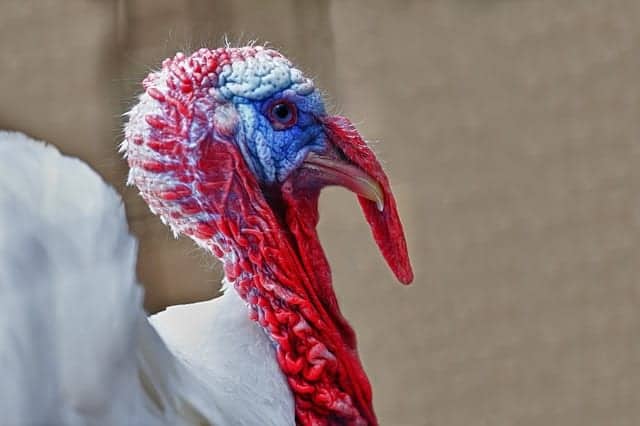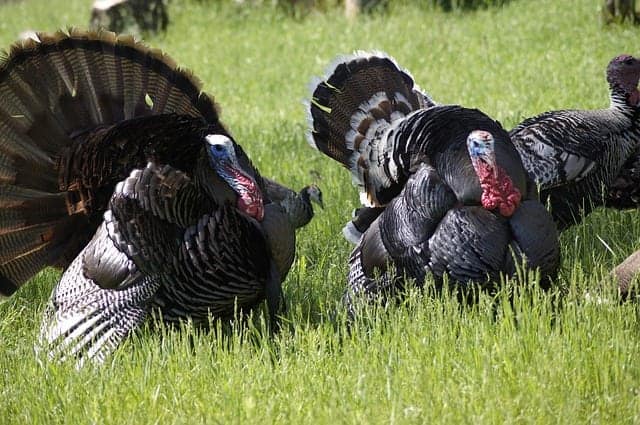When you think of hunting, you may not immediately think of a turkey. You will probably think of deer, bears and rabbits. However, turkey hunting is a very popular sport in North America. The two species of turkey hunted there are the wild turkey and the ocellated turkey.
Shotguns are very popular in turkey hunting but many hunters are starting to use a bow and arrow of some sort. Broadheads are typically used to hunt turkey, for they deliver the lethal blow required. For a body shot, any sort of broadhead can be used but for a head shot, a guillotine broadhead is best. This sort of broadhead is deigned to take the head clean off.
As with all hunting, there are set rules and regulations about when turkey can be pursued. Wild turkey tends to be hunted in the spring or fall, with male turkeys (known as gobblers) hunted in the spring and both sexes hunted in the fall.
The reason for this is to do with mating. Gobblers will be on the lookout for females to mate with in the spring and so will follow the sound of a hen. However, hunters can very sneakily mimic the sound of the hen to draw the gobblers in within range. When hunters choose to hunt in fall, they can mimic a turkey call to bring back the turkey after scattering a flock of them.
What is a Turkey Call?
A turkey call is a small device designed to mimic the sound of a turkey. Most turkey hunters will use one, as the level of success dramatically increases with one. The hunter uses the device to produce the turkey sound and then draws it in close, within range of their bow, and takes aim.
Different Types of Turkey Calls
There are different types of turkey calls on the market and the best type of turkey call for you will depend on what you are using it for and how experienced you are:
Friction
A friction call is the easiest type to use and is ideal for beginners. This category covers box calls, pot calls and push/pull calls.
Locater
These are an extremely popular style of turkey call and do not actually mimic a turkey. These devices mimic other birds, such as owls or hawks, in order to draw out the gobbler.
Tube
A tube call tends to be used by the more advanced hunter and can make almost any sound a turkey does. These are very popular and are used by being resting your lower lip on the reed at the bottom of the call and placing your top lip on the top of the call.
Diaphragm
Probably the most popular device, a diaphragm call is small and convenient to carry around, as well as being very affordable. It is a very realistic call and is made from latex (or a reed) being stretched over a frame in a plastic skirt. The hunter blows air across the call horseshoe, using differing pressures to create different sounds.
How to Use a Turkey Call
Whichever type of turkey call you use, be sure to practice a lot before venturing into the woods to hunt your turkey. To fool one, you will need to get your mimic spot on.
First of all, you need to ensure you get the correct rhythm. If you sound too fast or too slow, the turkey will not be fooled for you won’t sound realistic. Even if your noises are a little off-tone, the correct rhythm should be good enough to hunt spring turkeys.
Be sure to listen to an expert turkey caller, or even better live birds, in order to match their rhythm.
You should also work hard on your tone, for if you want to attract a gobbler it is better to sound like a hen. Hens can have different voices but many of them do sound alike, so be sure to learn what the most common sound is and practice it until you get it right. A mouth call will give you the most versatility if you do want to practice different sounds.
When you are turkey hunting, you need to make sure you are in the right place at the right time. If you are hunting a gobbler, be sure to be located in a spot that he will want to check out. It may be that you are concealed somewhere that you know he will strut about, or you know where he is and follow him from a distance that you can stay hidden. Either way, be a little cautious not to startle the turkey but don’t be too afraid to go for it.
On that note, one of the best pieces of advice is to not rush it. Make sure you are well concealed (wearing camouflage is a good idea) and have your turkey call ready to use. You don’t want to be scrabbling about in your kit bag once you see the turkey appear, for the noise and the delay may be enough to waste the opportunity.
Be sure to know exactly what time of the day the turkeys tend to appear in that area and be there. If they have a particular routine, this can really work to your advantage. You can know where to be, at approximately what time and whether it will be a gobbler or some hens.
When using a turkey call, be sure to know what the turkeys are saying. No, seriously.
Obviously you won’t be able to understand them because, well, you’re not a turkey. However, you should be able to understand what their intentions are. For instance, if you call a gobbler and he responds, what happens then? If he answers you a couple of times within an hour but does not appear, he isn’t coming to you. He is expecting you to go to him. Tricky.
Be wary of an old gobbler surrounded by a gaggle of hens, for he will be dominant and will probably not come to you no matter how many times you call, or what sort of call you use.
When hunting turkeys a decent turkey call is paramount, as is the ability to use one properly. Be sure to practice and if you find you are not having any luck, maybe switch to another style and try again until you find the best type of turkey call for you.


